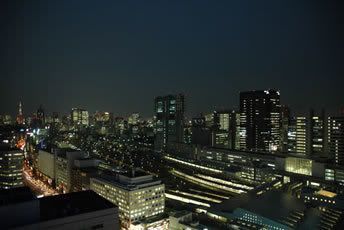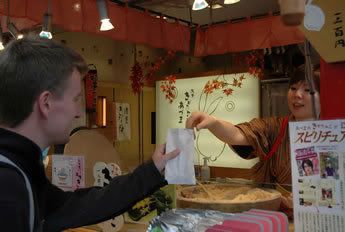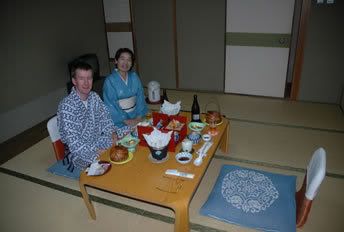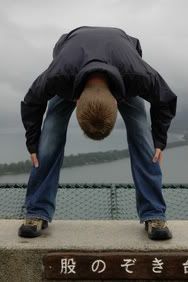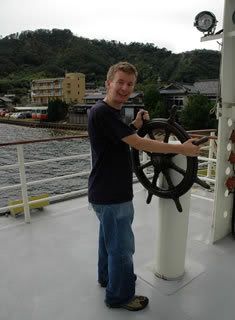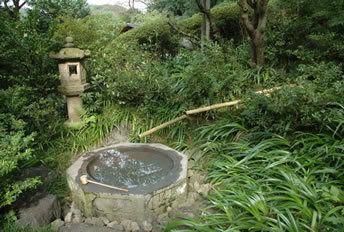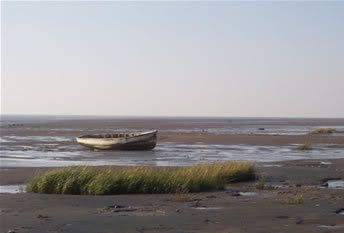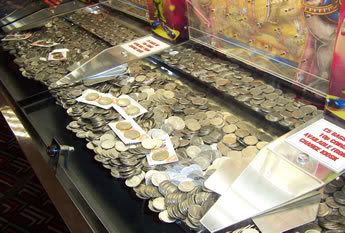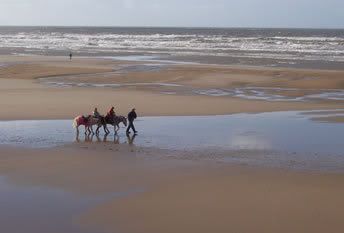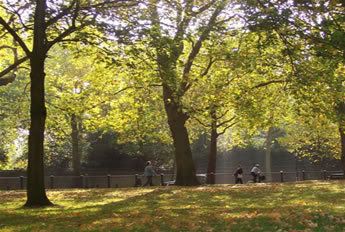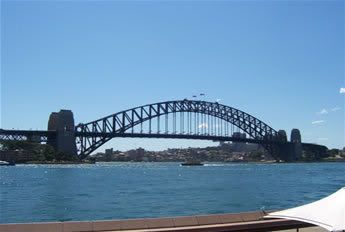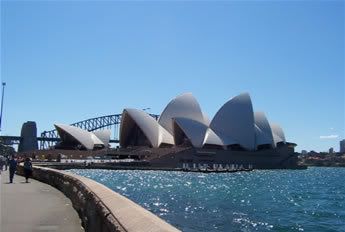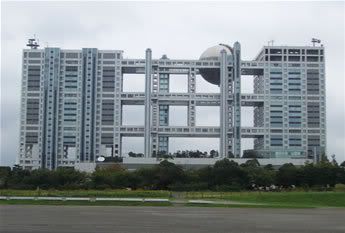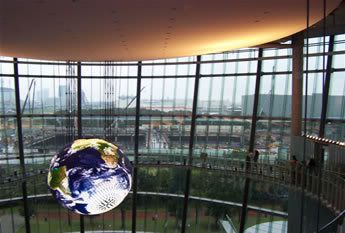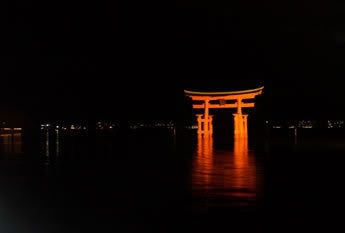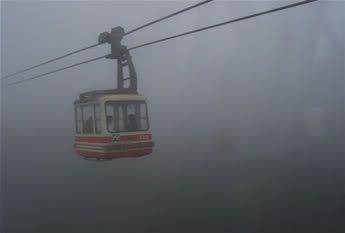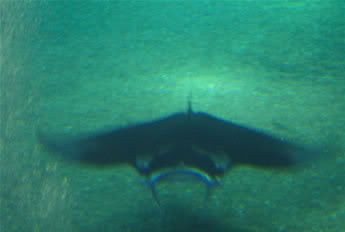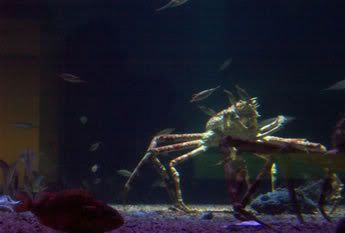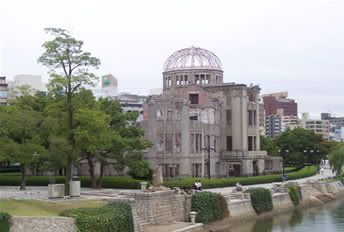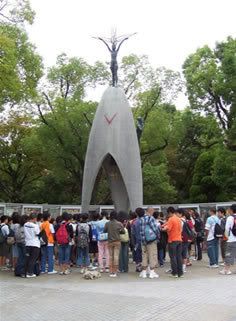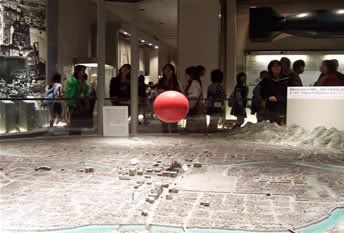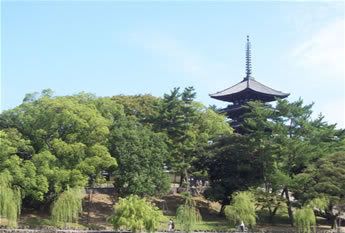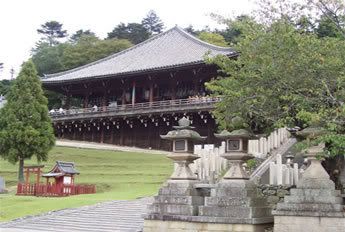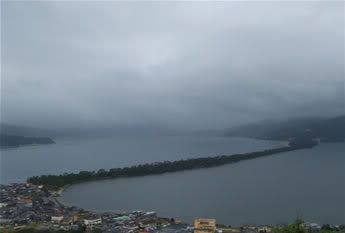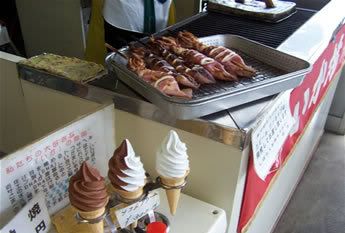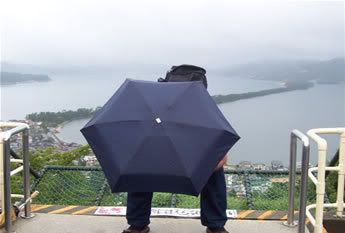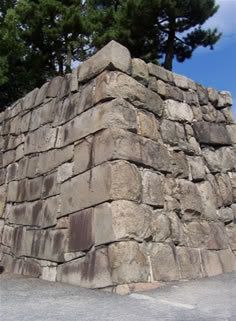Miyajima from the ferry, with red torii visible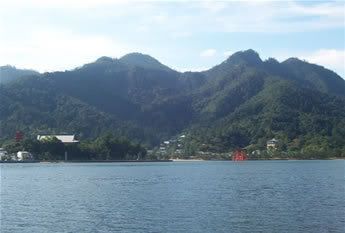
I opened the blinds of our ryokan this morning, to the sight of three foxes sitting in the grounds of the temple over the road. Black and brown - instead of the European red and white - foxes in Japan are seen as sacred, but are also believed to be able to posess people by entering them under their fingernails. At any rate, presumably they had free run of the temples on Miyajima - as do deer and monkeys - although we didn't see any of the latter. I enjoyed staying on Miyajima - at the risk of descending into travelogue cliche it was good to see a bit of the 'real Japan'. As our ferry cruised slowly across to the mainland, our departure signified the end of our week-long stay in ryokans, and back to hotels.
Osaka Castle

Not that I was complaining - I'm used to $20 hostels with one shared shower for 25 people, so to stay at places like the SwissOtel Osaka was a real pleasure. Staff were still incredibly subservient, but instead of a couple of kimono-clad old ladies there were dozens of attentive Japanese in white gloves and uniforms. Our 22nd floor room looked out over the expanse of concrete and neon that was Osaka. We visited the castle, Osaka-jo, a concrete reconstruction of one of the great Shogun-era fortresses. The displays inside were wonderful, and did a great job of getting across how central the castle was to the many battles of the time. Designed to be impregnable, it lasted for only 32yrs until 155,000 samurai destroyed it, under the command of that man again - Tokugawa Ieyasu. There were a few handwritten letters by him, signed in 1615, the year of the 'Spring Battle' of Osaka.
The Ebisubashi area of Osaka at night
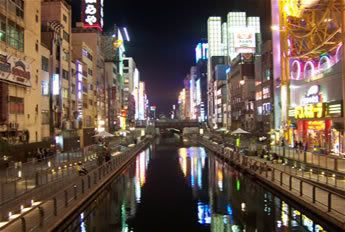
In the evening we wandered around the futuristic Minami (South) area of the city. We ate Okonomiyaki, sometimes referred to as 'Japanese pizza', cooked on a grill plate in front of us by two chefs. We were the only people in the restaurant, and it was really good food. Afterwards I had a walk around the Dotonbori nightlife district, which was a rampant culture-shock compared to the previous night`s solitude on peaceful Miyajima. Dotonbori is all neon, flashy shops, pachinko parlours and gaming arcades. Famed for the large neon signs and gaudy atmosphere, the best example is the crab restaurant Kani Doraku - to advertise it's wares there is a 20ft high mechanical spider crab above the entrance - and tanks of the unfortunate crustaceans with short futures just underneath.
I like Osaka - it felt like a city that hadn't become touristy or Westernised. Of course there were Western restaurants and shops, but it felt different to Tokyo (although I love both). I went int oa few gaming arcades, which all seemed to follow the same general pattern. On the ground floor were those fairground machines where you have to manouever a wonky grapple arm to pick up a prize - only they were completely modern and there were dozens of them. The prizes were still cheerfully crap though - toys, action figures, packs of baseball cards. I've yet to see one with a better prize than the one I saw at Portobello in Edinburgh with packs of 20 Benson and Hedges wrapped with a five pound note. Mind you, I'm guessing each place knows it's target audience.
Upstairs were smoky gambling areas, mostly electronic horse-racing simulators. Tired-looking men were sitting there using the touch-screen monitors to place money on the outcome of a computer game. In the basement level the entertainment was strictly for girls - everything was pink and there were photo booths everywhere. Apparently the thing for teenage Japanese girls to do, these booths (roughly twice the size of passport photo booths) served a similar purpose, only less functional. Each had a choice of funky backdrops, and mirrors galore. I'm not exactly sure what happens inside the curtain, but looking at examples on the outside the girls essentially make themselves up and take pictures of each other. Judging by the crowds, it seems incredibly popular.
The giant crab at Kani Doraku

The final nightlife aspect I looked at but didn't sample was pachinko. Not because I didn't fancy it or wasn`t looking glamorous enough, but because I hadn`t a clue what was going on. Pachinko is played by feeding steel ball bearings into the top of an eletcric machine, and collecting any that make it to the bottom. The more balls you get, the bigger your prize. The parlour I went in was an amazing assault - massive, loud, utterly confusing. Rows of these plastic machines stretched off in every direction, with people mutely watching their balls drop, as it were. I recognised the dead-eyed stares of serial addicts from my visit to Las Vegas. The noise was incredible - the metallic clattering of countless balls was deafening, but it was almost drowned out by the electronic jingles each machine produced. Coupled with loud J-Pop muzak, and the whole experience was amazing. I just wish I could have had a go - I sat down at a machine, but the instructions were all in Japanese and none of the numerous slots were taking my coins. Still, it was good just to take it all in, and if I wanted to end on another travelogue cliche I could say that it summed up Japan quite well - being a baffling assault to the senses, yet interesting and compelling - but I don't, so I won't.
